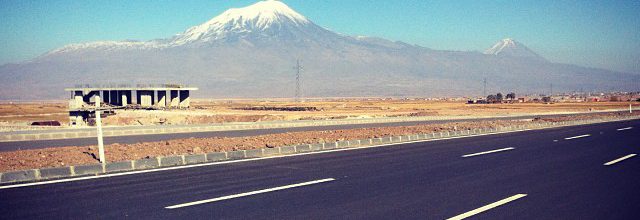Mouradian: The Two Sides of the Mountain

Paintings of Mount Ararat hang in the homes of many Armenians, and photographing (or posing with) the mountain is ever popular with visitors of the homeland.
I have often reflected on its never-eroding magnetism for generation after generation of Armenians. Thousands of paintings, writings, and songs later, our journey with this beloved rock still offers twists and turns worth exploring.
Sitting at the base of the mountain one evening a few years ago, the obvious suddenly dawned on me: When Armenians look at Ararat from Yerevan, they are not just staring at the mountain itself, but beyond it—they are, indeed, looking at historic Western Armenia.
Yet the view from the Turkish side—the heart of the Armenian homeland—is no less symbolic of the journey that lies ahead of us as a nation.
Standing here, in what is today’s Turkey, among ruins of Armenian cultural heritage, and looking at Ararat, I was not merely gazing at the mountain; I was looking at the republics of Armenia and Artsakh.
I was looking at a portion of the homeland where the schools and churches were not in ruin, where the nation thrived, and where we are more than tourists.
And the message was right there, imposing and overwhelming like Ararat on a clear day: Without bolstering the homeland east of the mountain, we will never achieve justice west of it.
Without a strong, prosperous, and democratic Armenia and Artsakh, there is little to look forward to on either side of the mountain.
That is what the mountain, if it could speak, would whisper in our ears as it poses with us for a photograph.
Source: Armenian Weekly Mid-West

